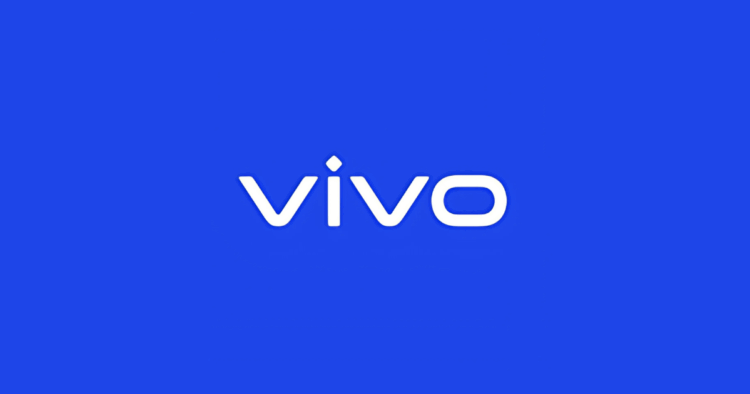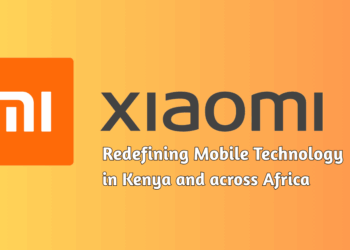Why Vivo’s Quiet Rise Is Reshaping Kenya’s Smartphone Battlefield
In a market long ruled by TECNO’s ubiquity and Samsung’s brand legacy, Vivo has quietly staged one of the most compelling ascents in Kenya’s mobile landscape. As of Q1 2025, Vivo became Android’s top revenue generator globally—surpassing Samsung and Xiaomi despite shipping fewer units. This isn’t a fluke; it’s a calculated pivot toward premium mid-range dominance, powered by devices like the V50 5G, co-engineered with ZEISS optics and priced to challenge expectations.
Kenya’s smartphone ecosystem now boasts over 72 million connected devices, with a 90% household penetration rate. Yet while the market saw a 2% dip in overall shipments, Vivo surged ahead—thanks to aggressive financing models like “Lipa Mos Mos”, AI-enhanced imaging, and retail expansion in Nairobi CBD, Eastleigh, and Kisumu. The brand’s ASP (Average Selling Price) is rising, signaling a shift from budget perception to premium aspiration.
This article unpacks Vivo’s strategic playbook—from buyer personas and retail tactics to the best-performing models of 2025. Whether you’re a tech buyer, retailer, or strategist, you’ll discover why Vivo isn’t just participating in Kenya’s smartphone war—it’s quietly rewriting the rules.
Vivo’s Brand Evolution: From Underdog to Market Force
Founded in 2009 under BBK Electronics, alongside OPPO, Realme, and OnePlus, Vivo began as a budget brand with a bold vision: to democratize premium smartphone experiences. Today, it’s rewriting the global playbook through strategic agility, design innovation, and market-specific execution.
Robust YoY Performance
By Q4 2024, Vivo posted 13% growth in global shipments—the highest among the top five brands. In China, it led with a 17.6% market share, shipping 13.2 million units. This momentum reflects Vivo’s mastery of supply chain efficiency and rapid product refresh cycles, outpacing slower giants like Samsung.
Vivo Smartphone Shipments: Year-on-Year Comparison
| Quarter | Shipments (2024) | Shipments (2025) | YoY Growth |
| Q1 | 26.3 million | 27.8 million | +5.7% |
| Q2 | 25.9 million | 27.1 million | +4.8% |
Source: IDC & Counterpoint Research (adopted).
In Q1 and Q2 2025, Vivo shipped 27.8M and 27.1M units, respectively, marking consistent YoY growth. In 2024, Q1 and Q2 reports indicated 26.3M and 25.9M, respectively.
Yet, its true triumph lies in revenue: Vivo became Android’s top earner globally in Q1 2025, driven by high ASP models like the X200 Pro and V50 5G—launched in Kenya and India. The Nairobi and Mombasa rollouts were particularly successful, aligning with market demand for high-spec devices.
Kenya: A Strategic Springboard for Premium Growth
Vivo’s financing model “Lipa Mos Mos” boosted premium uptake in Kenya, shifting brand perception from budget to aspirational. While Samsung led in volume, its ASP fell 7% YoY. Vivo’s ASP held firm, reinforcing its pivot toward premium-tier dominance.
Its entry into Kenya in 2019 was quiet but calculated—starting with the Y series and evolving into the V and X lines. Devices like the Y29 now cater to midrange buyers seeking value without compromise.
Vivo isn’t flooding markets—it’s elevating them. With ZEISS optics, AI imaging, and retail precision, it’s no longer the underdog. It’s a market force—quiet, calculated, and unmistakably ascendant.
Market Penetration in Kenya and East Africa
Vivo’s market penetration in Kenya and East Africa is no longer speculative—it’s strategic, deliberate, and increasingly dominant. Since entering Kenya in 2019, Vivo has transitioned from a fringe player to a formidable force in both urban and peri-urban retail ecosystems. Its dual-channel strategy—balancing aggressive online partnerships with deep offline retail integration—has enabled it to scale rapidly across diverse consumer segments.
Retail Footprint and Strategic Partnerships
Vivo’s presence spans major e-commerce platforms, including Jumia, Kilimall, and Patazone, where its V and Y series consistently rank among the top-selling mid-range devices. Offline, Vivo has established a presence in high-footfall zones such as Nairobi CBD, Eastleigh, Mombasa, and Kisumu, leveraging partnerships with Safaricom Masoko, OnFon Mobile, and DLight to offer flexible financing models, including “Lipa Mos Mos”. This approach has unlocked access for low-income earners and first-time smartphone buyers, aligning perfectly with Kenya’s mobile-first economy.
Offline vs. Online Strategy
While online sales drive volume, Vivo’s offline strategy is built around experiential retail—showcasing devices in branded outlets and service centers, offering hands-on demos, and training retail staff to upsell features like ZEISS optics and 90W FlashCharge. This hybrid model ensures brand visibility, buyer education, and post-sale support—critical in markets where trust and after-sales service influence purchasing decisions.
Regional Expansion and East African Momentum
Beyond Kenya, Vivo is expanding into Uganda, Tanzania, and Rwanda, targeting urban youth and digital creators with devices like the V50 5G, launched in May 2025. The brand’s emphasis on AI imaging, durable battery tech, and localized UX (including Swahili voice prompts) positions it as a culturally attuned disruptor in East Africa’s mid-range segment.
In essence, Vivo’s market penetration is not just about presence—it’s about precision. It’s a masterclass in retail orchestration, regional relevance, and consumer empathy.
Persona-Driven Buyer Segmentation
Vivo’s East African strategy is a textbook example of persona-driven segmentation—each device series is tailored to a distinct buyer archetype, reflecting lifestyle, budget, and digital behavior. This isn’t just marketing—it’s precision engineering of relevance.
Budget Buyers: Y Series
For price-sensitive consumers, the Vivo Y Series is a lifeline to digital inclusion. With models like the Y03 (KES 11,500) and Y22 (KES 19,999), Vivo delivers 5000mAh batteries, 4G LTE, and decent cameras at ultra-accessible price points. These devices thrive in offline retail, particularly in peri-urban zones such as Nyeri, Githurai, and Kisii, where cash transactions and trust-based selling are prevalent. The Y Series is engineered for endurance—long battery life, dual SIM support, and durable builds—making it ideal for students, hustlers, and first-time smartphone users navigating Kenya’s mobile-first economy.
Content Creators: V Series
Gen Z creators and social media mavens are drawn to the Vivo V Series, where form meets function. The V50 5G (KES 69,999) boasts ZEISS optics, a 50MP “All Main Camera” setup, cinematic lighting modes, and 4K video recording. Its ultra-slim design and AI-enhanced editing tools make it a darling for TikTokers, vloggers, and Instagram storytellers. Vivo’s creator-first philosophy is evident in its partnerships with influencers and events like Social Nation 2025, where the V Series was showcased as the ultimate tool for digital expression. It’s not just a phone—it’s a portable studio.
Power Users: iQOO and Flagships
For mobile gamers, multitaskers, and business elites, iQOO and flagship models like the iQOO 12 Pro and Vivo X200 Pro are performance beasts.
Powered by Snapdragon 8 Gen 3, 144Hz AMOLED displays, and 90W FlashCharge, these devices offer console-grade gaming, seamless app switching, and 5G readiness. With IP68 durability and reverse charging, they’re built for high-stakes environments—from boardrooms to esports arenas. These users don’t just consume—they conquer. And Vivo ensures they do so with speed, style, and stamina.
Best Vivo Phones in Kenya 2025 – Ranked Picks
Vivo’s 2025 lineup in Kenya reflects a strategic blend of performance, affordability, and persona-driven appeal. From flagship beasts to budget-friendly workhorses, these devices cater to a diverse range of buyer segments—from content creators and mobile gamers to retail representatives and everyday users. Below is a curated list of the top Vivo smartphones in Kenya, ranked by relevance, specs, and market fit.
Comparison Matrix: Vivo’s Top Picks in Kenya (2025)
| Model | Price (KES) | RAM/Storage | Camera Setup | Battery | Persona Fit |
| Vivo X100 Ultra | 98,000 | 12GB / 512GB | 50MP + 200MP + 50MP | 5,500mAh | Pro creators, mobile journalists |
| Vivo V50 5G | 61,000 | 8GB / 512GB | 50MP + 50MP | 6,00mAh 90W | Mid-tier influencers, execs |
| Vivo S30 Pro Mini | 63,000 | 8GB / 256GB | 50MP + 50MP + 8MP | 6500mAh, 90W | Fashion-forward youth, vloggers |
| Vivo V29 5G | 49,500 | 8GB / 256GB | 50MP + 8MP + 2MP | 4600mAh | Urban professionals, TikTokers |
| Vivo Y22 | 26,000 | 4GB / 128GB | 50MP + 2MP | 5000mAh | Students, entry-level users |
| Vivo Y19 5G | 17,500 | 6GB / 128GB | 13MP + 0.08MP | 5500mAh | Budget buyers, rural retailers |
| Vivo Y04 | 13,500 | 4GB / 128GB | 13MP + 0.08MP | 5500mAh | First-time smartphone users |
Strategic Insights
Flagship Power
The Vivo X100 Ultra leads with Snapdragon 8 Gen 3, IP68/IP69 durability, and a Zeiss-certified camera—ideal for high-end content creators and tech reviewers.
Mid-Range Mastery
Vivo V50 and S30 Pro Mini offer sleek design, 5G connectivity, and premium imaging—perfect for Nairobi’s style-conscious youth and digital entrepreneurs. The Vivo V60, the latest addition to Vivo’s impressive lineup, promises to continue the brand’s fine run based on its specs (6500mAh Battery, 50MP triple camera, and 4K video recording capabilities, powered by the Snapdragon 7 Gen 4).
Budget Brilliance
Vivo Y-series models, such as the Y22 and Y19 5G, deliver long battery life and decent cameras at unbeatable prices, making them ideal for mass-market retail and rural penetration.
Retail Strategy and Financing Models
Vivo Kenya’s 2025 retail strategy is laser-focused on affordability, accessibility, and retail empowerment—a trifecta that’s reshaping how smartphones reach everyday consumers. With rising demand across urban and peri-urban markets, Vivo has partnered with leading retailers and fintech platforms to offer flexible installment plans, trade-in programs, and retail training academies.
Installment Plans
Vivo devices are now available through zero-deposit financing on platforms such as Aspira, Lipa Later, and M-Kopa. Buyers can spread payments over 6 to 12 months, with monthly rates starting as low as KES 1,500 for entry-level models. This model has proven especially effective in Nairobi, Ngong, and Eldoret, where smartphone penetration is high but upfront cash flow remains a barrier.
Trade-In Options
Select Vivo retail partners now offer device trade-in programs, enabling users to trade in their older models for discounts on new purchases. For example, trading in a Vivo Y20 can earn up to KES 5,000 off a new Vivo V29 5G. These programs are verified through IMEI checks and condition assessments, ensuring transparency and fair value.
Retail Training & SOPs
Vivo has rolled out Retail Excellence Training across Kenya, equipping sales reps with product knowledge, persona-based selling techniques, and after-sales support protocols. Training modules include spec validation, financing pitch scripts, and visual merchandising—all designed to boost conversion and customer satisfaction.
This affordability-first strategy not only democratizes access to tech but also empowers retailers to become trusted advisors. JuaTech Africa’s coverage of these models reinforces its role as the region’s authority on mobile retail transformation. We look forward to partnerships, value-added collaborations, and breaking through mass markets to niche markets through laser-focused campaigns.
Future Outlook: AI, Imaging, and Ecosystem Play
Vivo’s trajectory in Kenya and East Africa is not just about devices—it’s about building an intelligent, interconnected mobile ecosystem. As the brand pivots toward AI-powered experiences and deeper user integration, its latest move is the unveiling of Jovi, a new sub-brand designed to redefine mid-range innovation and ecosystem synergy.
Jovi: Vivo’s Strategic Sub-Brand for AI-Driven Mobility
In 2025, Vivo officially launched Jovi in select markets, including Brazil, as part of a strategic rebranding initiative aimed at navigating trademark conflicts and repositioning its mid-range offerings. However, Jovi is more than a name swap—it’s a signal of intent. The sub-brand is expected to focus on AI imaging, smart assistant integration, and affordable 5G, targeting digital natives and emerging markets, such as Kenya.
The Jovi V50 5G, Jovi V50 Lite 5G, and Jovi Y39 5G are the first wave of this transformation. These models mirror Vivo’s global lineup but come pre-loaded with Android 15, FunTouch OS 15, and enhanced Jovi Assistant capabilities. The V50 5G features four 50MP cameras, including ultra-wide and OIS-enabled lenses, a 6.77-inch AMOLED display, and a 6000mAh battery with 90W FlashCharge support. Meanwhile, the V50 Lite 5G features a Sony IMX882 sensor, 32MP selfie camera, and IP65 durability—ideal for creators and professionals on the move.
AI Imaging and Smart Accessories
Vivo’s push into AI imaging is evident in its scene recognition, portrait enhancement, and dual-view video modes. The Jovi Assistant, once a background feature, is evolving into a proactive tool—offering contextual suggestions, voice commands, and smart scheduling. Paired with upcoming Vivo smartwatches, TWS earbuds, and AR glasses, the brand is laying the groundwork for a full-fledged device ecosystem.
Ecosystem Integration in East Africa
For Kenya and East Africa, this means more than tech—it’s about access, empowerment, and relevance. With localized UX, Swahili voice support, and financing models, Jovi could become the gateway to AI-powered mobility for millions. Vivo isn’t just selling phones anymore—it’s architecting the future of digital life.
This is the next frontier. Brands are building up their war chests for the ultimate tech battle of the decade, around AI and ecosystems. And JuaTech Africa is here to decode it and tell you the truth as it is.
If you’ve skimmed your way here, pause. This isn’t just another device roundup—it’s a strategic, in-depth look at Vivo’s evolving playbook, tailored for East Africa’s tech-savvy buyers, retailers, and creators.
Final Thoughts & Wrap Up
If you’ve skimmed your way here, pause. This isn’t just another device roundup—it’s a strategic, in-depth look at Vivo’s evolving playbook, tailored for East Africa’s tech-savvy buyers, retailers, and creators.
From the opening analysis of Vivo’s market momentum to the persona-driven breakdown of its flagship and budget offerings, this piece has unpacked the brand’s layered approach to imaging, AI, and retail relevance. We’ve decoded specs, mapped buyer personas, and spotlighted retail positioning with surgical clarity. But the real headline? Vivo’s launch of Jovi, a sub-brand engineered for AI-first experiences, smart accessories, and ecosystem integration.
The Jovi V50 5G, V50 Lite, and Y39 5G aren’t just phones—they’re gateways to a smarter, more connected lifestyle. With AI cameras, Jovi Assistant, and a growing suite of wearables, Vivo is building more than devices—it’s crafting a digital ecosystem for East African users who demand more.
Whether you’re a content creator, retail specialist, or everyday multitasker, this write-up offers actionable insights and persona-driven guidance. Don’t just skim—scroll back and read it word for word. You’ll walk away smarter. Explore our Buyer Guides, Retail Pitch Decks, and Device Comparisons for deeper context. Follow JuaTech Africa on Facebook, TikTok, and YouTube for exclusive reviews, strategy breakdowns, and community insights.
Tech isn’t just evolving—it’s converging. And Vivo is leading the charge. Let’s decode it together. Read our comprehensive Xiaomi brand review.
















